China's Auto Industry: Beyond Price Wars and Internal Friction
![]() 06/09 2025
06/09 2025
![]() 482
482

Introduction
This is not the vision of industrial upgrading. At this year's Chongqing Forum, disputes flared up once again, with many industry leaders offering thought-provoking warnings. Just like two years ago, heated debates still resonate. China's auto market seems to have fallen into an endless cycle of price wars and public opinion battles. In the end, who has truly fared better, and who has suffered?
Fatigue is the most frequently used word in the auto industry in 2023. Last year, internal friction was felt throughout the industry. After such an intense and prolonged price war, China's auto industry has indeed made significant progress, prompting some automakers to undergo major adjustments akin to scraping away the bone to heal the wound. However, the outcome remains undecided.
In the past, we often said that when technology companies entered the auto industry, they stirred up the auto circle like catfish. But now, they have also begun to fade after experiencing setbacks. Instead, leading independent brands have become the loudest advocates of aggression, perhaps due to their innate nature and the objective laws of the market, from which no one can escape.
When vested interests change, the main source of conflict naturally shifts as well. This year has only seen a brief four-month period of stability, but suddenly, the fatigue and internal friction of the past two years have doubled. The invisible hand only wants the entire industry to develop healthily and orderly, but faced with the survival rule of the fittest, competition among automakers means no one wants to lose out.
Looking at China's auto market today, Kong Hui, Chairman of Konghui Technology, was compelled to write "I Have a Dream." In fact, many share this dream. Enterprises hope for rising profits, stable supply chains, and continuous R&D investment; consumers hope for no cost-cutting, no exploitation, and no scapegoating; and the industry hopes for fair competition and mutual trust...
Previous dreams were simple: automakers grew bigger and stronger, consumers bought cost-effective cars, and suppliers had big customers. It's not that there are more dreams now, but rather that ambitions and desires have increased. As a result, many automakers have gone astray. This is not how China's auto industry should be, nor is it the vision of industrial upgrading.
01 Who Wants This Outcome?
Many arguments against price wars go like this: Who made cars cheaper? Who drove down the prices of joint venture brands and luxury brands? This is not a price war; you get what you pay for. Why have European, American, Japanese, and Korean automakers long monopolized high premiums and earned excess profits? This is the market returning to rationality.
Such a conclusion is both right and wrong. On the one hand, market competition has indeed broken the price monopoly of foreign brands, benefiting consumers. In the past, joint venture cars often had premiums of tens of thousands of yuan, and luxury brands charged high profits based on their brand aura. Now, the rise of domestic cars forces them to lower prices to survive, which is a manifestation of a healthy market.
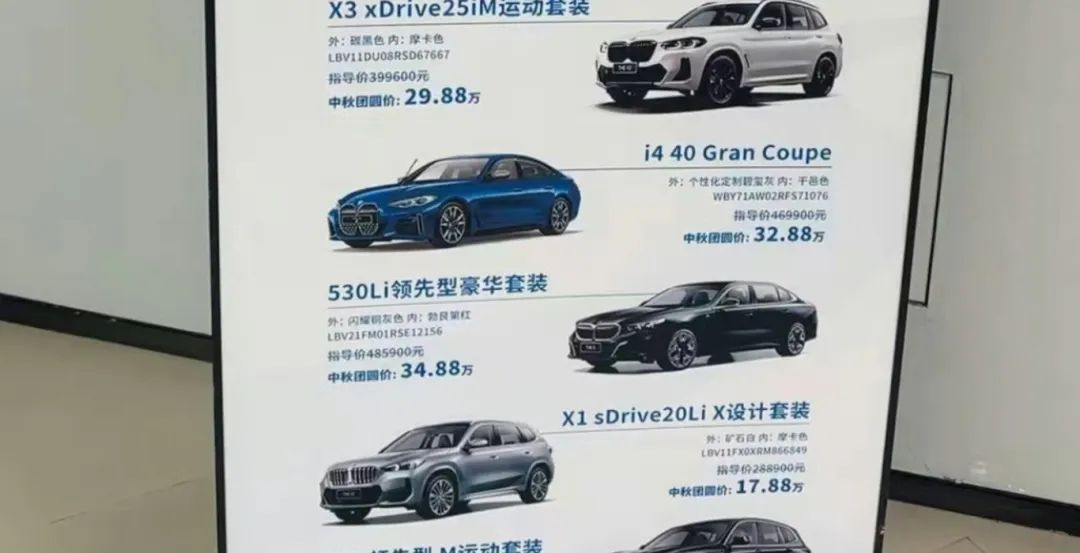
On the other hand, it ignores the process by treating it as an inevitable result of historical progress. The length of the process cycle determines the approach to solving problems during this period and whether the ultimate result brings positive or negative industry changes.
Currently, China's auto industry or some automakers are in a state of seeking quick success and instant benefits, so the side effects are more pronounced. But if these automakers are willing to take longer to push forward, the outcome will still be the same as above. And it is certain that each enterprise's survival state will definitely be better than it is now.
Many automakers equate "low price" with "high cost-performance" or even "industrial progress," ignoring the side effects of vicious competition. Some automakers are willing to sell at a loss to grab market share, leading to reduced R&D investment, supply chain pressure, and even cost-cutting. Consumers may benefit in the short term but face issues such as stagnant product iteration and reduced after-sales service in the long term.
More dangerously, if the industry falls into the vicious cycle of "if you don't lower prices, you won't sell," it will ultimately weaken China's auto industry's potential for high-end development. China's mobile phone industry has walked a similar path: initially relying on price wars to seize the market, but truly rising after brands like Huawei and Xiaomi broke through core technologies and established high-end images.
The auto industry is the same. Price competition is only a means, not an end. If price wars are a short-term strategy to force foreign companies to offer discounts and accelerate market shuffling, while local automakers take the opportunity to upgrade technology and optimize supply chains, it will eventually lead to healthy competition, benefiting consumers and upgrading the industry.
However, if there is long-term reliance on low-price competition, falling into a vicious cycle of "cost reduction → de-specification → low-end development," it will overdraw the industry's future. True "market rationality" should not be a zero-sum game of price competition but rather a comprehensive breakthrough in technology, quality, and brand value. What China's auto industry needs to do is not just to lower prices but to increase value.
Many hope to see independent brands drive foreign brands out of China. This is actually a misconception. Whether independent or joint venture brands, whether strong or weak, they will have their own survival rules. Those that cannot survive will certainly withdraw from the Chinese market, but the stronger ones will not give up so easily.
Another point is that the production and sales volume of China's auto market cannot grow forever and will eventually stabilize. Similarly, the size of any automaker will also peak. Independent brands have been squeezing the market share of foreign brands at an excessive speed, and this excess speed will inevitably come at a cost.
Therefore, even if the conclusion that independent brands will drive out foreign brands holds, it will not happen overnight. The evolution of the market structure needs to follow objective laws. Capacity expansion takes time, channel construction requires precipitation, and brand recognition needs to be accumulated through generations of products.
The current aggressive onslaught of independent brands has, to some extent, overdrawn future competitive space. When market growth peaks and stock market competition becomes the norm, overly aggressive expansion may backfire: after price wars erode profits, can R&D investment continue? Will the crazy expansion of production capacity turn into a heavy burden? How can the dealer system be maintained after channel oversaturation?
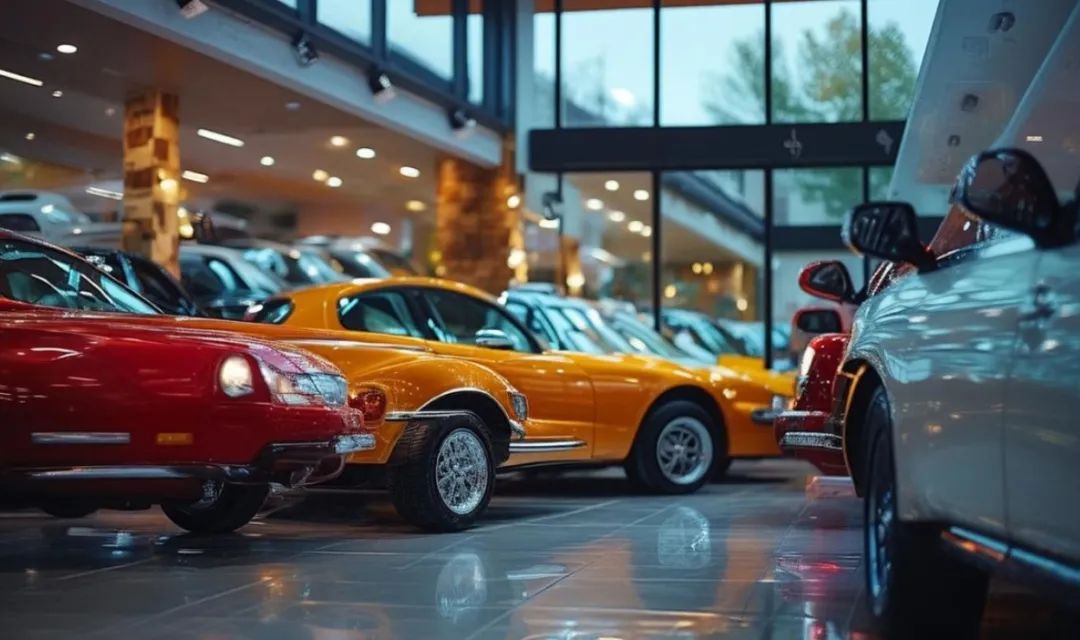
Although foreign brands are retreating, their accumulation in the high-end market, global layout, and core technologies remains profound. The victory of independent brands should not just be a replacement of sales but rather a surpassing of the system. Otherwise, even if their market share surges in the short term, it may be like a castle on the beach, unable to withstand the waves of industrial cycles and consumption upgrades.
02 Have We All Honed Our Internal Capabilities?
"If you haven't sorted out things domestically, going abroad may not be a good thing. If you don't have the strength, you shouldn't go (expand overseas) because one day (if problems arise), it may reflect poorly on Chinese brands," said Li Yunfei of BYD. This statement deserves reflection throughout the entire auto industry.
Especially the phrase "haven't sorted out things domestically," which is believed to have hit the soft underbelly of 99% of domestic automakers.
From a global market perspective, the performance of Chinese automakers on the international stage still needs to be improved. Over the years, few Chinese automakers have been able to rank among the top 10 globally for an extended period. This reflects the relatively insufficient competitiveness of China's auto industry in the global market and the lack of leading enterprises with extensive influence and profound heritage.
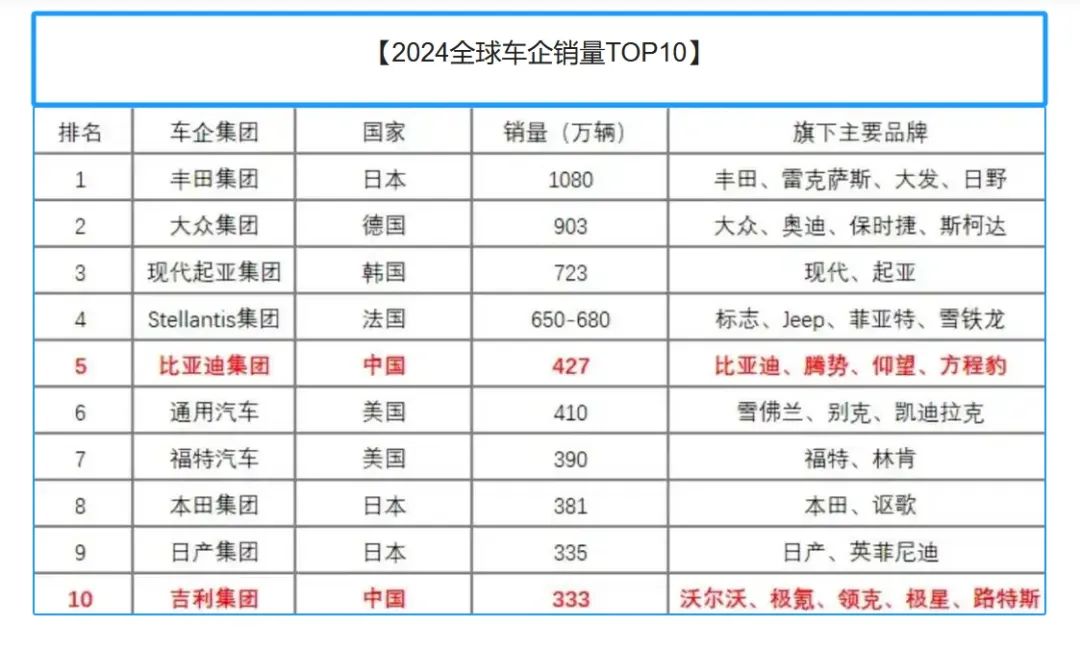
Compared with international auto giants such as Toyota and Volkswagen, Chinese automakers still have a significant gap in brand awareness, market share, and technological research and development. These international giants rely on years of accumulation and global layout to possess strong competitiveness in various markets.
Therefore, Zhu Huarong, Chairman of Changan Automobile, also said, "I know this may provoke criticism, but everyone should learn from world-class automakers. The world is vast, and there are still many systemic capabilities we need to build."
Then, in terms of product layout, many Chinese automakers lack reasonable planning. Some automakers blindly follow trends, producing whatever models are popular in the market, resulting in disorganized product lines and a lack of systematicness and coherence. This lack of strategic vision in product layout not only makes it difficult to form a brand identity but also increases the enterprise's operating costs and risks.
In contrast, some internationally renowned automakers have clear strategic planning in product layout. They launch diversified product series based on different market demands and consumer groups, forming a complete brand matrix.
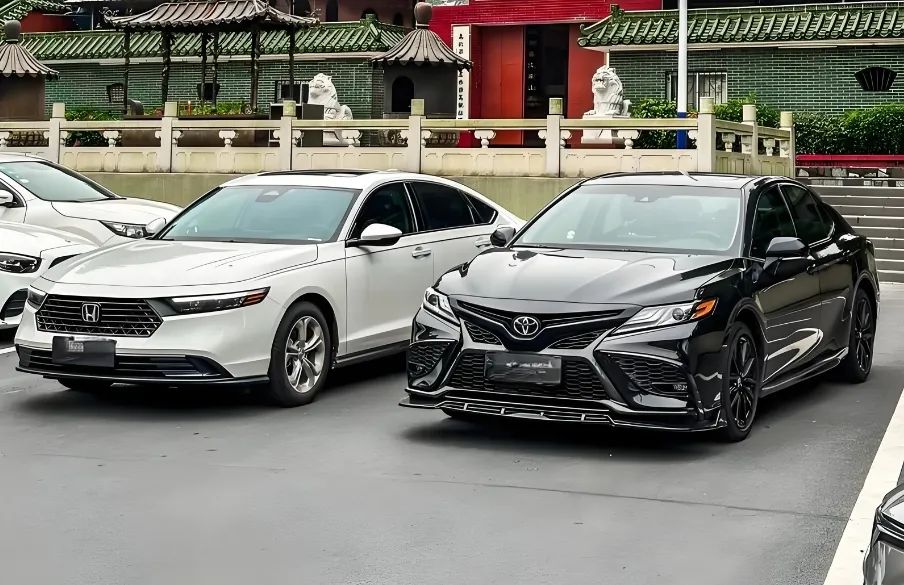
This brings us to the star models within brands, whose continuous iteration is also a major shortcoming of Chinese automakers. A successful star model can not only bring considerable sales and profits to an automaker but also enhance its brand image and recognition. However, few Chinese automakers have one or more star models that continuously iterate.
Many models gain some attention in the initial stage of launch due to novel design and marketing strategies but are quickly eliminated by the market due to a lack of strategic awareness. International automakers, on the other hand, place great emphasis on the continuous iteration of star models, maintaining their competitiveness and attractiveness by continuously improving performance, upgrading configurations, and optimizing design.
Models like Volkswagen's Passat and Golf, Toyota's Camry and Corolla, and Honda's CR-V and Civic have been popular globally for decades. In the era of fuel vehicles, there were very few sustainably iterable models produced by Chinese automakers. Now, as we switch to the era of electrification, we hope Chinese brands can have their own star products.
After examining the above models, it can be said that Chinese automakers also lack benchmark products in segmented markets. Whether in luxury sedans, SUVs, or MPVs, international automakers dominate with numerous benchmark products. Therefore, in the era of new energy, what Chinese automakers need to do is not only to lead in technology but also to maintain benchmark products as an important asset.
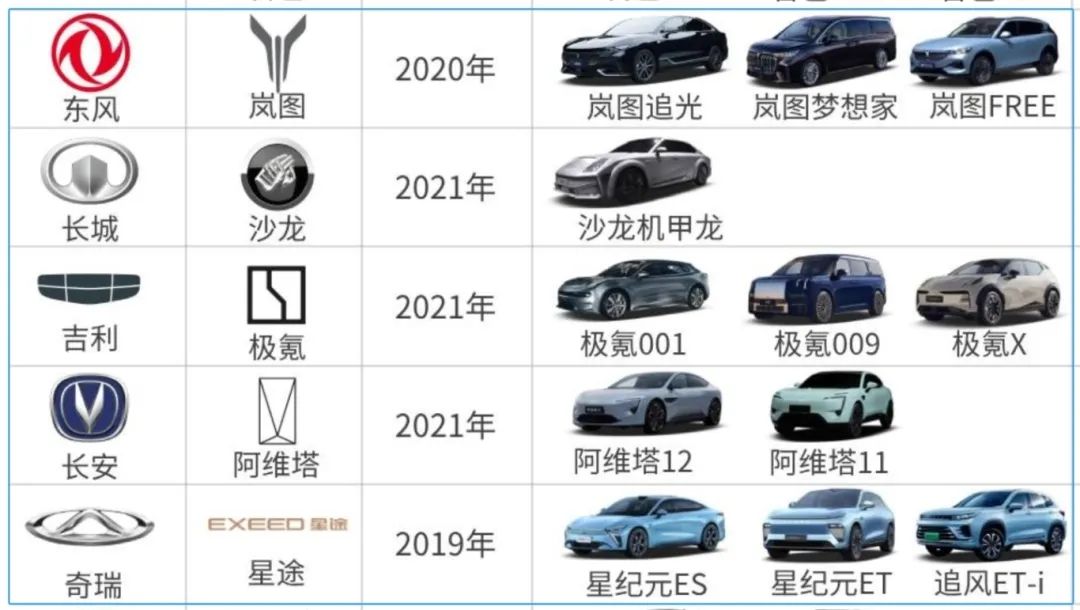
Now, let's talk about brand strength. A good example is that China's auto industry has yet to produce a truly high-end brand. International auto giants such as Mercedes-Benz, BMW, and Audi dominate the global high-end auto market with their long history, excellent quality, and strong brand influence.
In contrast, Chinese automakers are still in the initial stage of high-end brand building. Although some enterprises have launched high-end brands in the era of fuel vehicles, they still have a significant gap with international high-end brands in terms of brand recognition, brand loyalty, and brand premium capabilities. Ultimately, those high-end brands faded away. Nowadays, we hope the emerging high-end new energy brands will succeed.
There is no doubt that many automakers currently have an aggressive mindset of rushing into the world without sufficient internal capabilities. This speculative mindset of blooming inside the wall but fragrant outside is extremely dangerous. True globalization is not simply replicating the domestic price war model but rather establishing systemic capabilities in product strength, service systems, localized operations, and other dimensions.
Chinese automakers need to understand: Overseas markets are not a haven from domestic competition but rather a higher-dimensional arena. For enterprises that have not completed systemic cultivation in the domestic market, blindly expanding overseas is tantamount to neglecting the essentials. As the era of new energy begins, the global auto industry is essentially restarting from scratch, and everything is still unknown.
Editor-in-Charge: Yang Jing
Editor: Chen Xinnan








